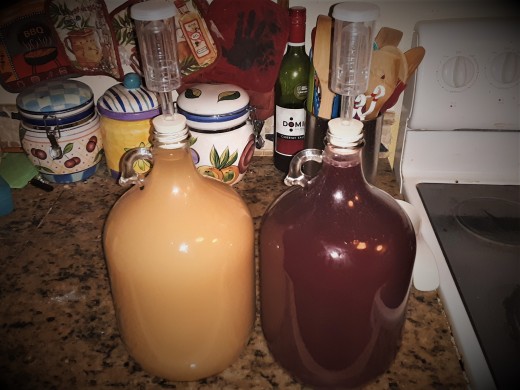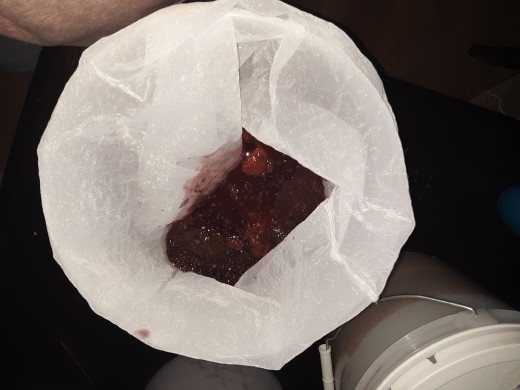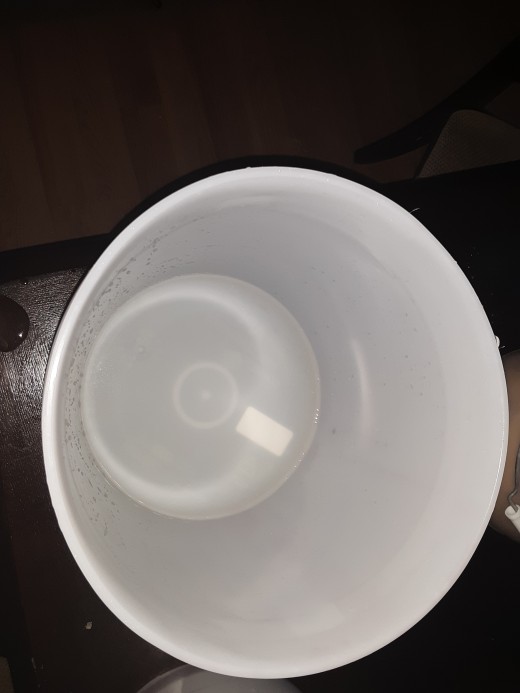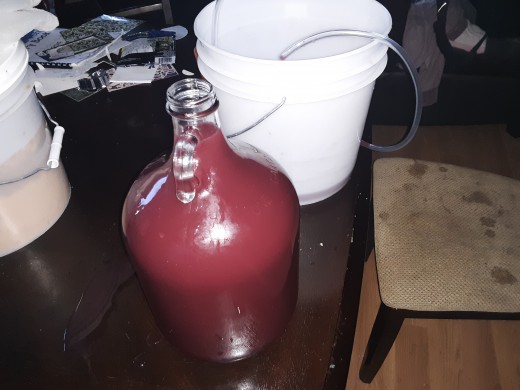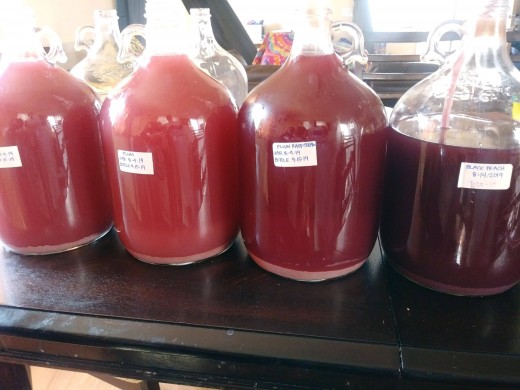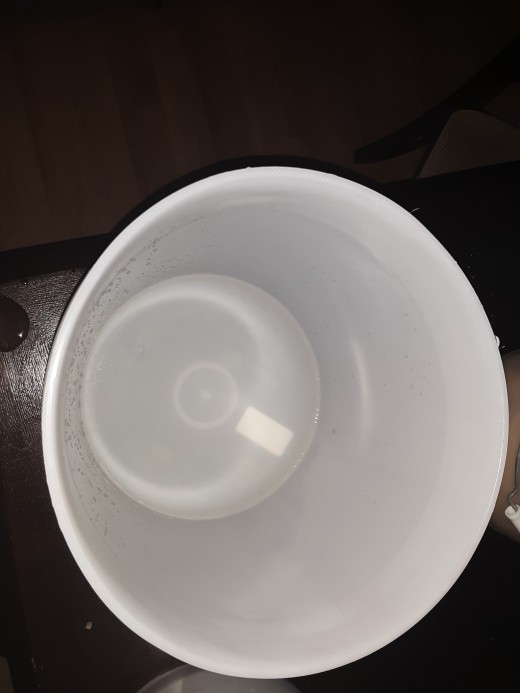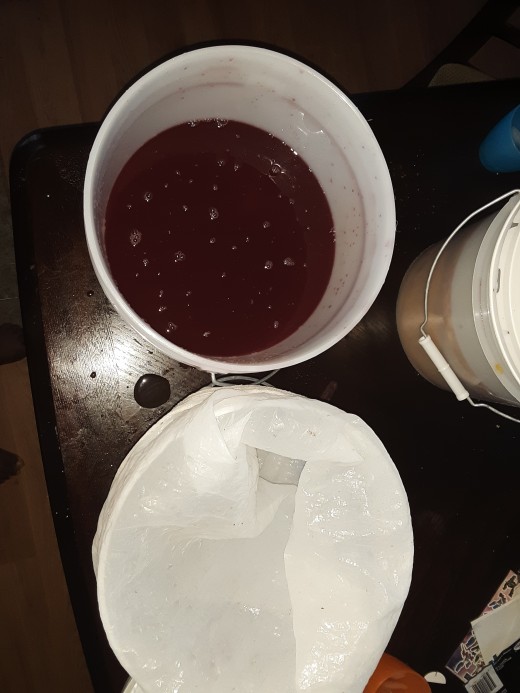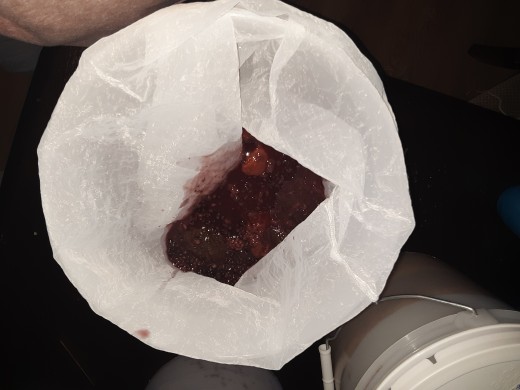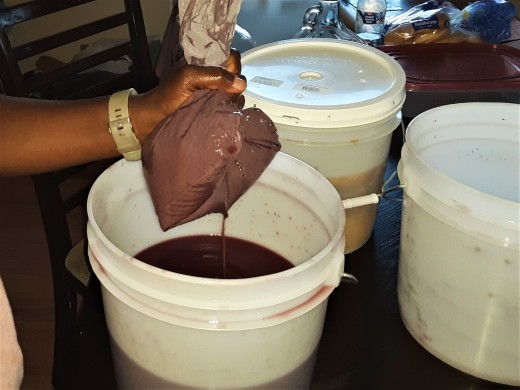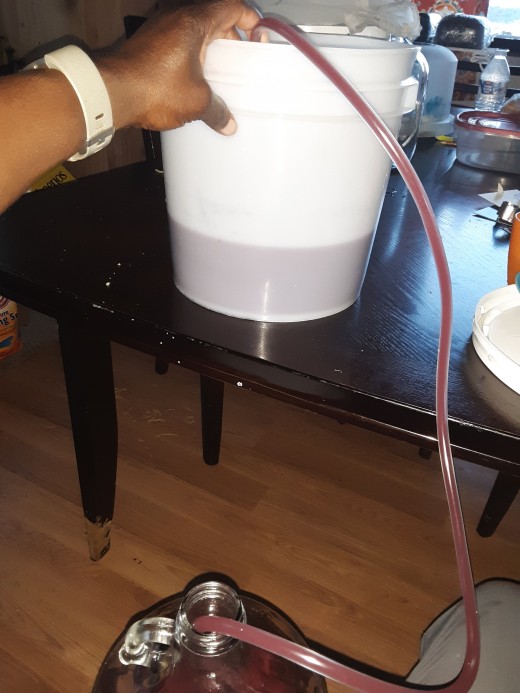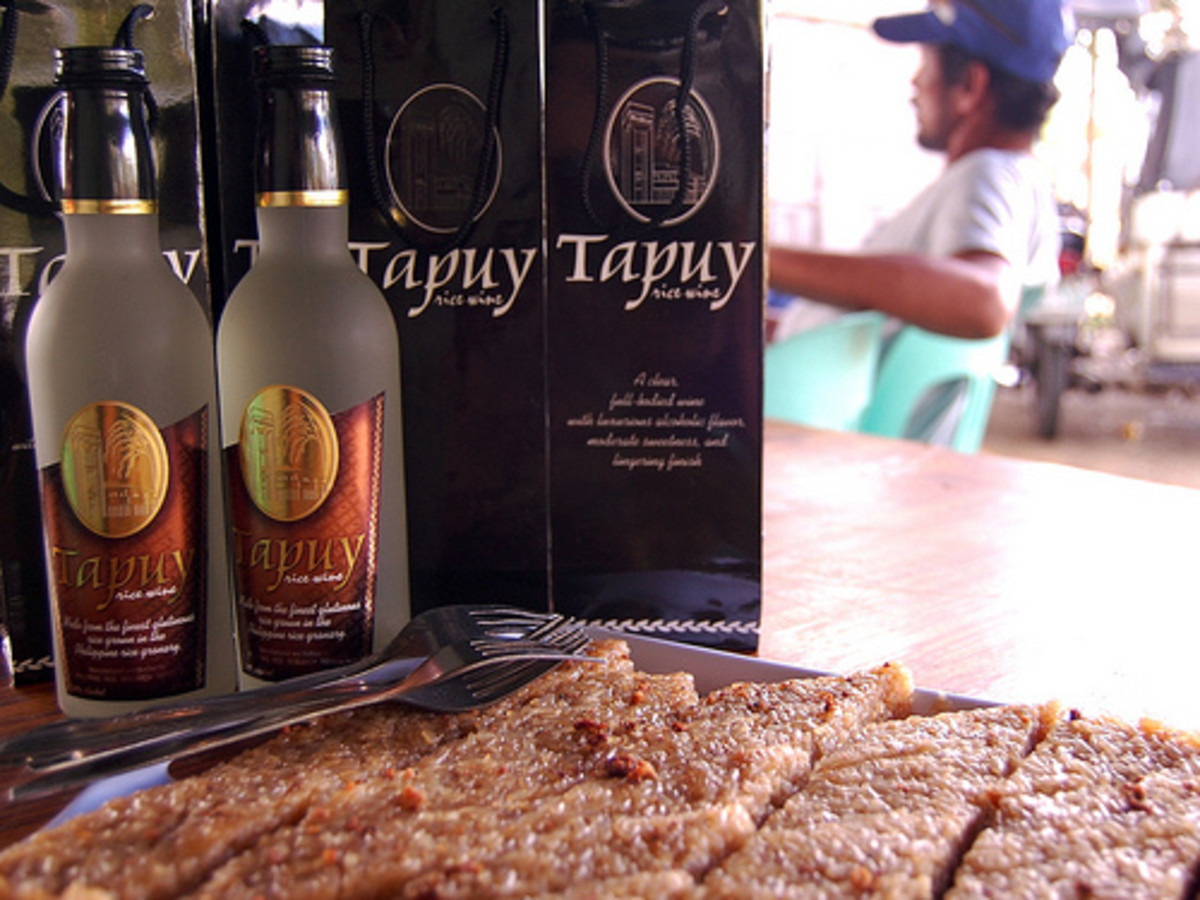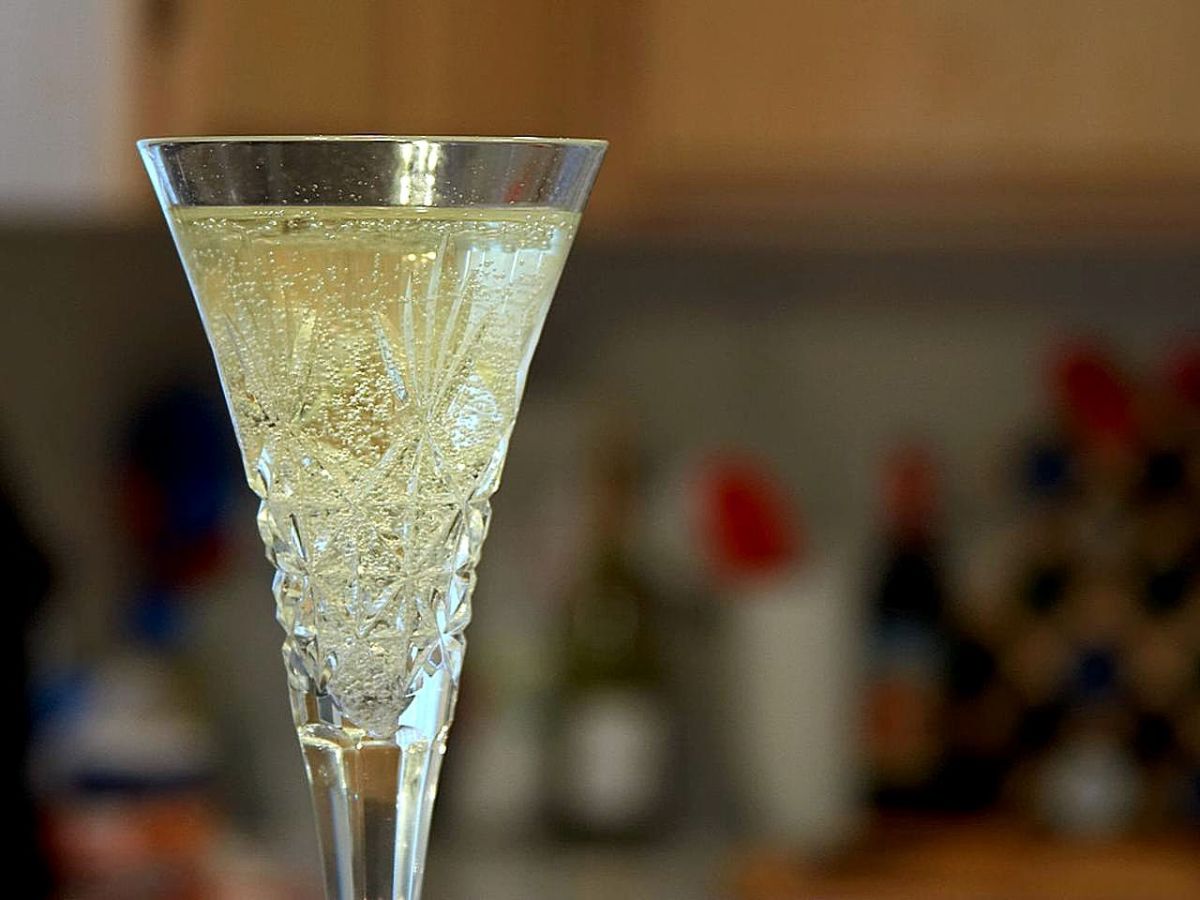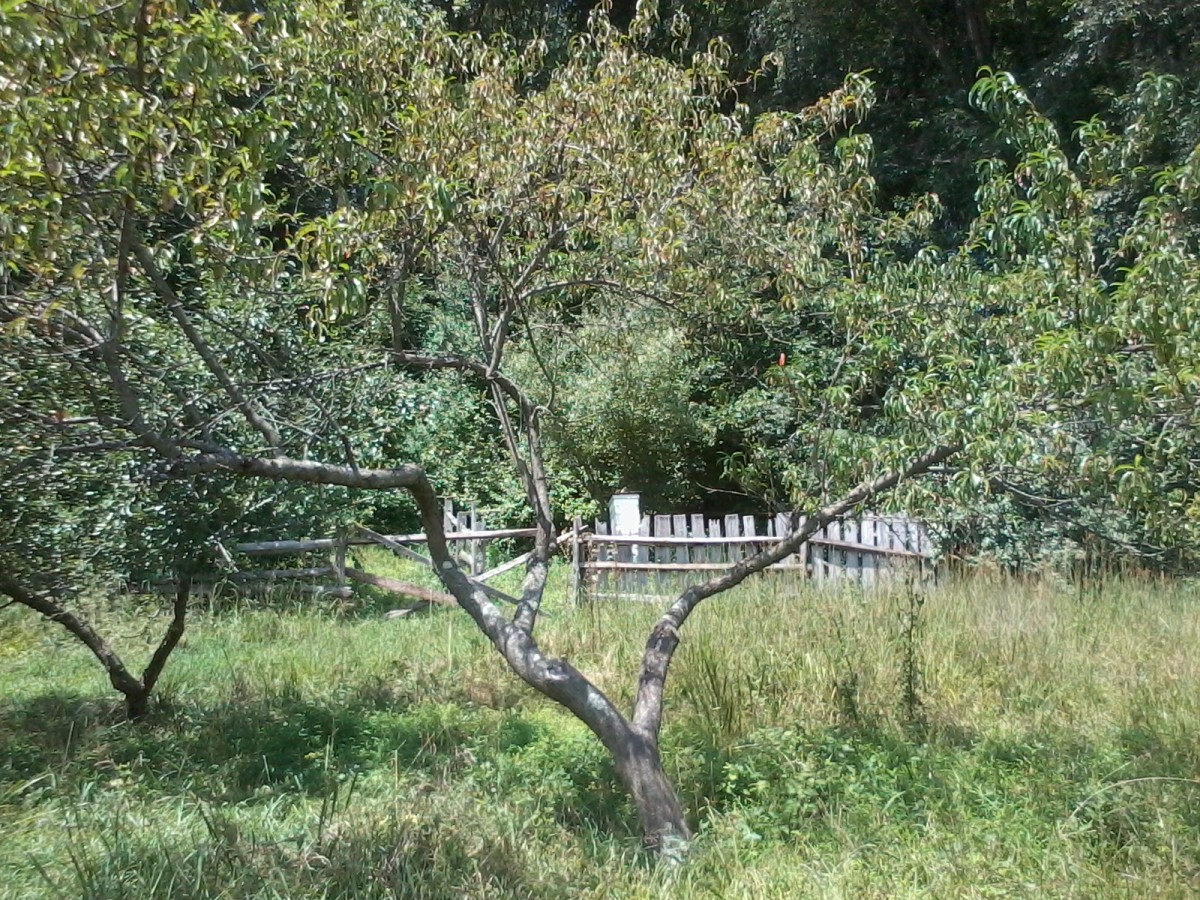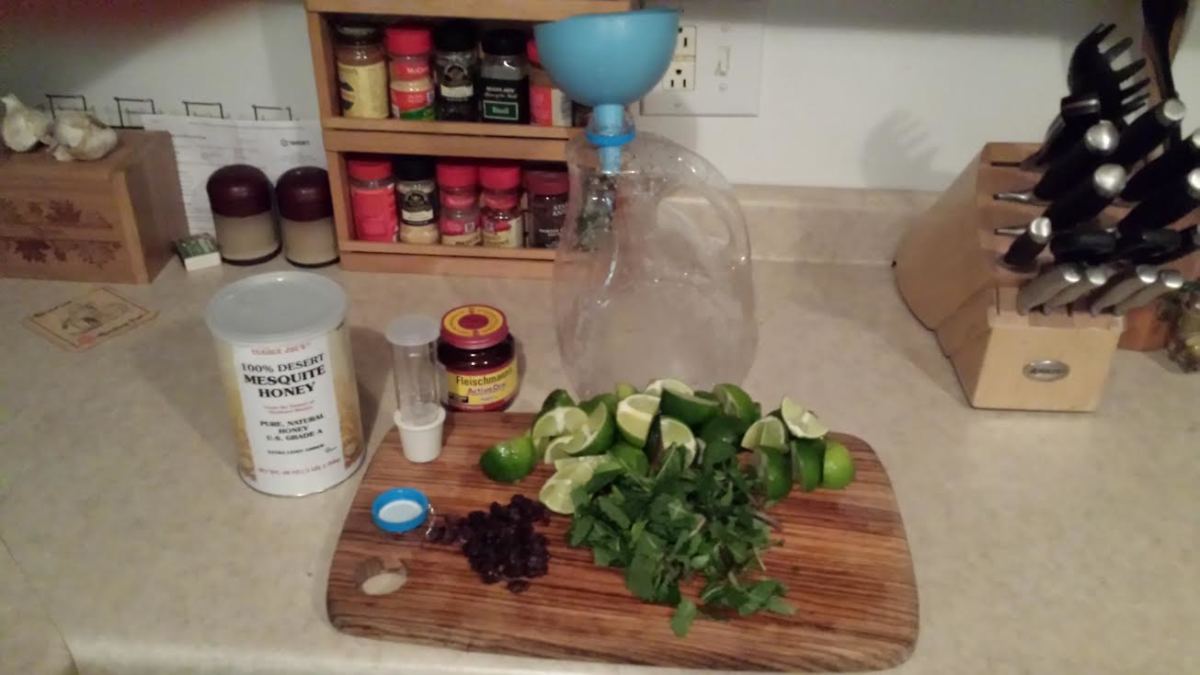Make Your Own Wine at Home. Cheap and Simple.
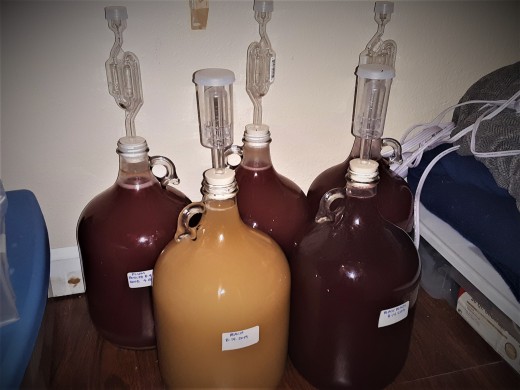
A little story:
I began making wine at home in the summer of 2018. After a few conversations with a fellow homemade winemaker, I decided to take the jump, and I intend to make this an annual event for years to come. Let me be honest and say that I am not much of a drinker...at all. Most of my friends find it very ironic that I am the one who is brewing fruit-based moonshine in my downstairs pantry, gallons at a time. I do it mostly for fun in creating blended fruit variations, and it is a useful means to manage all of the fruit produced on my property. Overall I give most of my wine away as Christmas gifts and samples to friends and family. The first year I produced four gallons of wine and bottled them in glass beer bottles. Here it is a year later, and I still have bottles left over, holding the wine that just gets better with time.
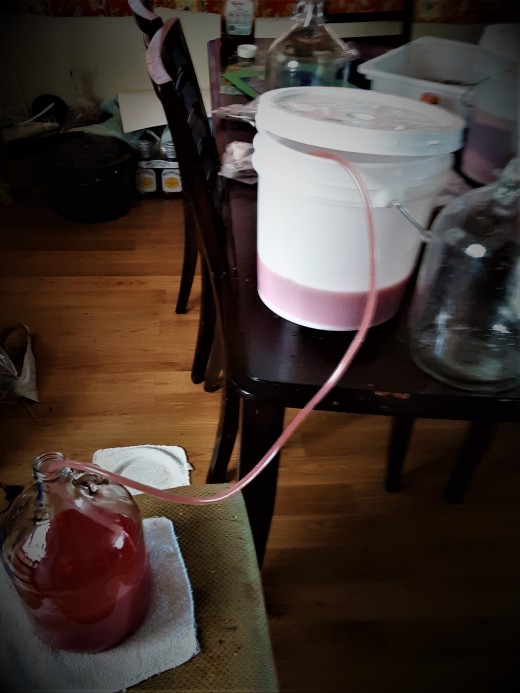
What you will need:
2-gallon Food Safe bucket
1-gallon Demijohn
Siphon tube
Cheesecloth bag
Corking tool
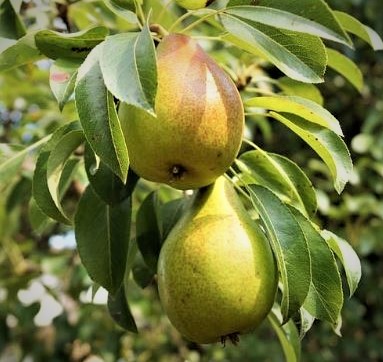
Ingredients:
4.5lbs Fresh Fruit
1/2tsp Yeast Nutrient
1 packet Wine Yeast
1 tsp Pectin enzyme
~5lbs Sugar
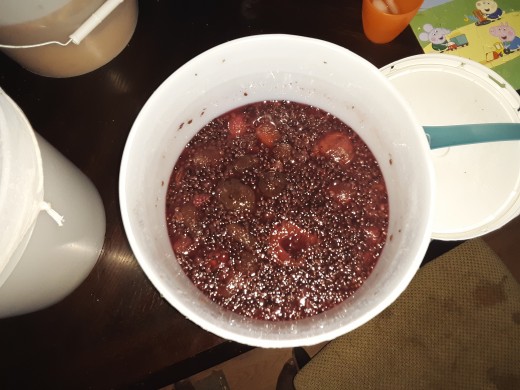
Everything you need
Round 1:
- Clean and sterilize food-safe bucket(s). I have used sterilization kits and home remedy sterilizations processes. The One-step sterilization kit is excellent and easy to find. In the absence of a one-step kit, I have washed my buckets with regular dishwashing liquid and rinsed out with hot water. Then added two cups white vinegar and 1 cup lemon juice, secured the lid and shook vigorously for about one minute. Opened the top, poured out liquids then rinse again with hot water.
- Add 4.5lbs fruit to a food-safe bucket and smash with a potato masher to release fruit juices.
- Boil 4 cups of water and add to your bucket of fruit to kill bugs and bacteria. (Oh yes, winemaking can get gross but don't worry, it all works out in the end, you will strain foreign elements later.)
- When the water cools, add pectin enzyme. Stir thoroughly.
- Cover the bucket and let sit for at least 12 hours.
- After 12 hours boil 6 cups sugar in 5 cups water and add to your bucket of fruit.
- Let the water cool then add yeast nutrient and wine yeast. A note about wine yeast. I use __oz packets white and red wine yeast bought on Amazon. I began using entire packets in the recipe from the beginning and later learned I should only be using about .5 grams. Using the entire packet is not bad; it is just a matter of how high of an alcohol content you are seeking. For your information: using a full yeast packet yields an alcohol content of about 25%....typical vodka is around 40%.
- Store in dark warm place ( 75F is optimal, but as long as the brew does not get too cold it will survive) for at least six days stirring the fruit thoroughly each day. Each time you stir, be sure to listen for fizzing. If you do not hear fizzing after the first stir, your yeast is dead and will not ferment alcohol. Discard contents and start over. It's sad but necessary. The amount of fizzing you hear will reduce to barely noticeable by day six. Don't worry, this is normal.





Round 2:
9. Sterilize demijohn. Again you can use one-step sterilization kits or sterilize with white vinegar, dish soap, and lemon juice. Put a few drops of dish soap inside the demijohn and add hot water. Shake vigorously for about a minute then pour out what soap you can. Add 1 cup vinegar and swirl around until soap suds are reduced. You may need to rinse with vinegar more than once to get rid of all the soap suds. Once all soap is gone, add 1 cup lemon juice and swirl around for about a minute. Pour out then rinse several times with hot water.
10. Sterilize a large 1-gallon or greater pitcher or an empty food-safe bucket. Place a cheesecloth bag over your pitcher/bucket and pour your young wine into the bag. Lift the bag over your container to allow the liquid to drain. Squeeze and manipulate the bag until you cannot get anymore liquid out of the bag. Discard solids in your compost, garbage disposal, or trash.
11. Place your freshly strained bucket/pitcher of wine higher than your empty demijohn. Place your siphon tube inside the pitcher/bucket and use the siphon to pull the liquid up through the tube (or suck on one end to pull the liquid up). When gravity takes over, place the open end of the tube inside the demijohn and let the liquid flow until it reaches the neck base of the demijohn.
12. Plug the demijohn and place in dark warm place for at least six weeks or until it no longer fizzes or taste carbonated.






Round 3:
13. Re-rack your wine. After 3-4 weeks you will notice a layer of sediment at the bottom of your demijohn. Get rid of sediment and clear up your wine by re-racking. To do this, repeat sterilization from step 10. Then repeat step 11 from the demijohn to a bucket/pitcher. When siphoning wine be sure the tube is above the sediment and be sure to take as little sediment as possible.
14. Boil 3 cups sugar in 4 cups water. Return your sediment-free wine to a clean demijohn and add boiling sugar water until the liquid reaches the bottom of the demijohn neck.
15. Return the demijohn to its dark warm home. After six weeks, use a straw and check your wine for carbonation. If it is no longer fizzy, you are ready to bottle.
16. Bottling uses the same process outlined in step 11. A one-gallon demijohn will fill five standard-sized wine bottles. Corks are easy to find at goodwill stores or purchase from Amazon. Corking tools are cheap and reusable, beginning at prices as low as $10. Follow the instructions included with your corking tool. Store for as long as you like or enjoy right away.
This content is accurate and true to the best of the author’s knowledge and is not meant to substitute for formal and individualized advice from a qualified professional.
© 2019 Lani Morris


